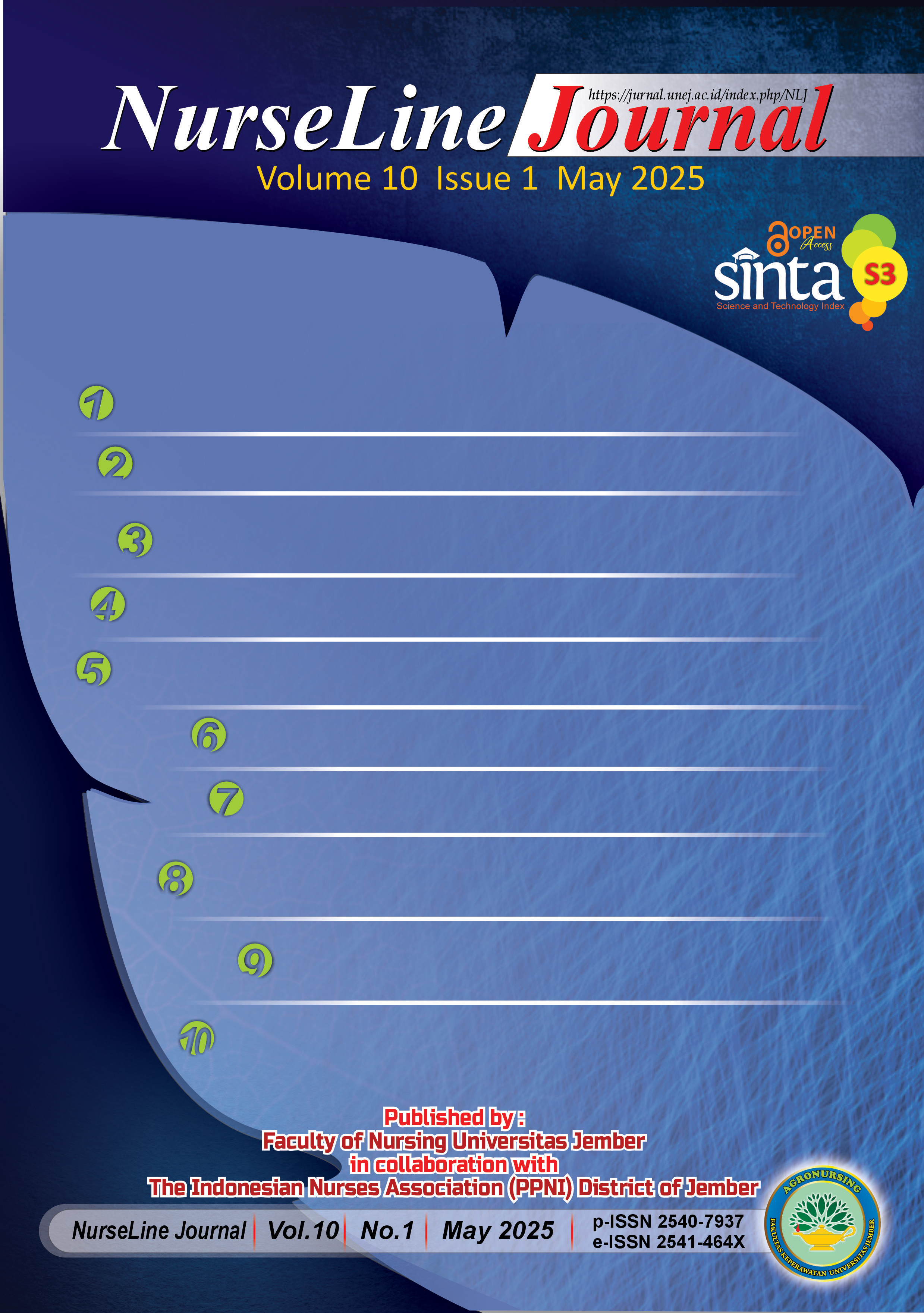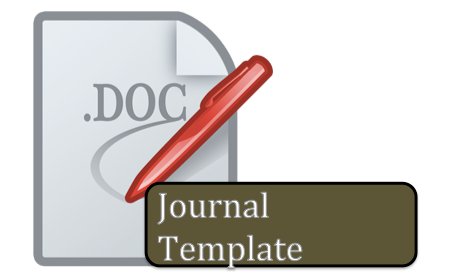Overview of Ambulance Transport Utilization: Scoping Review
DOI:
https://doi.org/10.19184/nlj.v10i1.51032Keywords:
ambulances, developed country, developing country, emergency medical services, emergenciesAbstract
Background: The demand for ambulance transports has increased by 29.2% worldwide. This rise necessitates system improvements and standardization. There are differences in prehospital transport ambulance services utilization between developed and developing countries. Objective: Review aims to describe utilization of ambulance transports in developed and developing countries. Methods: Scoping review method was conducted based on 5 databases: ScienceDirect, PubMed, ClinicalKey, Cochrane, SpringerLink, and hand-searching on Google. Results: Inclusion criteria were original articles, in English and Indonesian, published in last 5 years (2019-2024), open access, available in full text, review yielded 2,739 articles, 6 articles meeting criteria for analysis, 2 additional articles identified through hand searching. Conclusion: There are differences in ambulance transport usage between developed and developing countries. In developed countries, most transport ambulances are used for prehospital emergency care, primarily for trauma cases. In contrast, most ambulance transport in developing countries is used for inter-facility referrals, primarily for medical emergencies. In developing countries, not all patients receive prehospital care, if they do, it is often limited to basic aid, whereas in developed countries, prehospital care can include advanced aid. Review highlights differences between developed and developing countries in ambulance transport utilization and services.
Downloads
References
Adem, M. A., Tezera, Z. B., & Agegnehu, C. D. (2024). Utilization of ambulance service in prehospital settings, Jimma City, Ethiopia. BMC Emergency Medicine, 24, 1–9. https://doi.org/10.1186/s12873-024-00999-8
Amalia, N. V., Priyanti, R. P., & Nahariyani, P. (2018). Efektivitas penggunaan ambulance siaga desa dalam transportasi pre hospital. Jurnal Ilmiah Keperawatan (Scientific Journal of Nursing), 4(1), 52–63. https://doi.org/10.33023/jikep.v4i1.135
Arzoumanian, A., Agopian, A., Hovhannisyan, M., & Chekijian, S. (2024). Emergency medical services in Armenia: National call trends and future directions. Unpublished manuscript, 1–12.
Brice, S. N., Boutilier, J. J., Gartner, D., Harper, P., Knight, V., Lloyd, J., Pusponegoro, A. D., Rini, A. P., Turnbull-Ross, J., & Tuson, M. (2022). Emergency services utilization in Jakarta (Indonesia): A cross-sectional study of patients attending hospital emergency departments. BMC Health Services Research, 22, 1–10. https://doi.org/10.1186/s12913-022-08061-8
Kementerian Kesehatan Republik Indonesia. (2019). Pedoman teknis ambulans. Kementerian Kesehatan RI.
Khattak, F. A., Saba, M., Hakim, M., Khan, A., Aleem, S., Afaq, S., Ullah, A., Rahim, A., Haq, Z. U., & ul, Z. (2023). Patient satisfaction and utilization of ambulance services in prehospital services at a tertiary care hospital: A cross-sectional study in Peshawar, Khyber Pakhtunkhwa, Pakistan. Air Medical Journal, 42(3), 239–245. https://doi.org/10.1016/j.amj.2023.03.002
Maryani, N., & Ulfa, M. (2023). Skema integrasi pelatihan prehospital para tim ambulans Kota Yogyakarta. Journal, 7, 5–7.
McHenry, R. D., Moultrie, C. E., Cadamy, A. J., Corfield, A. R., Mackay, D. F., & Pell, J. P. (2023). Prehospital and retrieval medicine in Scotland: A retrospective cohort study of the workload and outcomes of the emergency medical retrieval service in the first decade of national coverage. Scandinavian Journal of Trauma, Resuscitation and Emergency Medicine, 31, 1–10. https://doi.org/10.1186/s13049-023-01109-6
Mekonen, Z., Jemebere, W., Chekol, A. T., Tadesse, F., Borie, Y. A., Mola, E., Wale, M. A., Tunushe, Y. M., Reta, Y., Aynalem, A., Feleke, B., Gobena, G. G., Beyene, B., & Yeheyis, T. (2024). Emergency medical service and its associated factors were utilized among patients who visited public hospitals in Hawassa City, Sidama Region, Ethiopia, 2023. Heliyon, 10, e31906. https://doi.org/10.1016/j.heliyon.2024.e31906
Mishra, V., Ahuja, R., Nezamuddin, N., Tiwari, G., & Bhalla, K. (2020). Strengthening the capacity of emergency medical services in low and middle income countries using dispatcher-coordinated taxis. Transportation Research Record, 2674(4), 338–348. https://doi.org/10.1177/0361198120929024
Newton, J., Carpenter, T., & Zwicker, J. (2024). Exploring paramedic perspectives on emergency medical service (EMS) delivery in Alberta: A qualitative study. BMC Emergency Medicine, 24, 1–10. https://doi.org/10.1186/s12873-024-00986-z
NHS. (2022). South Central Ambulance Service NHS Foundation Trust. NHS.
Roudsari, B. S., Nathens, A. B., Arreola-Risa, C., Cameron, P., Civil, I., Grigoriou, G., Gruen, R. L., Koepsell, T. D., Lecky, F. E., Lefering, R. L., Liberman, M., Mock, C. N., Oestern, H. J., Petridou, E., Schildhauer, T. A., Waydhas, C., Zargar, M., & Rivara, F. P. (2007). Emergency medical service (EMS) systems in developed and developing countries. Injury, 38(9), 1001–1013. https://doi.org/10.1016/j.injury.2007.04.008
Sakagianni, A., Feretzakis, G., Karlis, G., Loupelis, E., Tzelves, L., Chatzikyriakou, R., Trakas, N., Karakou, E., Petropoulou, S., Tika, A., Rakopoulou, Z., Dalainas, I., & Kaldis, V. (2022). Admission and discharge following ambulance transport to the emergency department. Studies in Health Technology and Informatics, 289, 418–421. https://doi.org/10.3233/SHTI210947
Sultan, M., Abebe, Y., Tsadik, A. W., Ababa, A., Yesus, A. G., & Mould-Millman, N. K. (2019). Trends and barriers of emergency medical service use in Addis Ababa, Ethiopia. BMC Emergency Medicine, 19, 1–8. https://doi.org/10.1186/s12873-019-0242-5
Tiwary, B., Nilima, N., Majumdar, P., Singh, M., & Khan, M. A. (2020). Quality of services provided by the public-funded ambulance program: Experience from a northern state in India. Clinical Epidemiology and Global Health, 8(3), 962–966. https://doi.org/10.1016/j.cegh.2020.03.005
Tricco, A. C., Lillie, E., Zarin, W., O’Brien, K. K., Colquhoun, H., Levac, D., Moher, D., Peters, M. D. J., Horsley, T., Weeks, L., Hempel, S., Akl, E. A., Chang, C., McGowan, J., Stewart, L., Hartling, L., Aldcroft, A., Wilson, M. G., Garritty, C., ... Straus, S. E. (2018). PRISMA extension for scoping reviews (PRISMA-ScR): Checklist and explanation. Annals of Internal Medicine, 169(7), 467–473. https://doi.org/10.7326/M18-0850
Downloads
Published
Issue
Section
License
Copyright (c) 2025 NurseLine Journal

This work is licensed under a Creative Commons Attribution-ShareAlike 4.0 International License.








